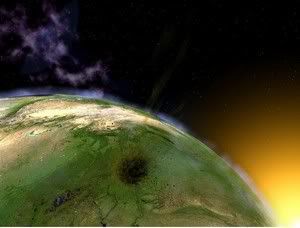global hype

some inconvieniant facts
Yes, there has been some warming in the past century or so, about 1 degree Fahrenheit. Before that, from about 1250 to 1850, we were in a cool period known as the Little Ice Age. Much of the recent warming actually occurred from about 1895 to 1940, with the biggest warming trend from about 1910 to 1935, well before the significant increase in fossil fuel use.
The year 1934 was actually the warmest year, with 1998 coming in second, and temperatures have declined slightly since then. Greenland reached its highest temperature in 1941 and has been cooling ever since. Temperatures have actually cooled slightly since 1998, very likely signaling another ice age similar to the Little Ice Age.
The year 1934 was actually the warmest year, with 1998 coming in second, and temperatures have declined slightly since then. Greenland reached its highest temperature in 1941 and has been cooling ever since. Temperatures have actually cooled slightly since 1998, very likely signaling another ice age similar to the Little Ice Age.
Friday, February 10, 2012
Subscribe to:
Post Comments (Atom)



2 comments:
Certain facts about Earth's climate are not in dispute:
The heat-trapping nature of carbon dioxide and other gases was demonstrated in the mid-19th century.2 Their ability to affect the transfer of infrared energy through the atmosphere is the scientific basis of many JPL-designed instruments, such as AIRS. Increased levels of greenhouse gases must cause the Earth to warm in response.
Ice cores drawn from Greenland, Antarctica, and tropical mountain glaciers show that the Earth’s climate responds to changes in solar output, in the Earth’s orbit, and in greenhouse gas levels. They also show that in the past, large changes in climate have happened very quickly, geologically-speaking: in tens of years, not in millions or even thousands.
Certain facts about Earth's climate are not in dispute:
The heat-trapping nature of carbon dioxide and other gases was demonstrated in the mid-19th century.2 Their ability to affect the transfer of infrared energy through the atmosphere is the scientific basis of many JPL-designed instruments, such as AIRS. Increased levels of greenhouse gases must cause the Earth to warm in response.
Ice cores drawn from Greenland, Antarctica, and tropical mountain glaciers show that the Earth’s climate responds to changes in solar output, in the Earth’s orbit, and in greenhouse gas levels. They also show that in the past, large changes in climate have happened very quickly, geologically-speaking: in tens of years, not in millions or even thousands.
Post a Comment